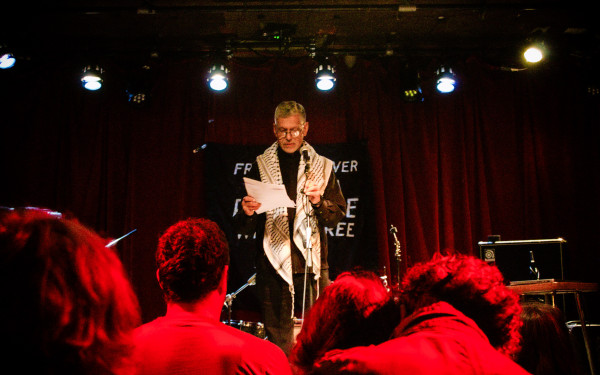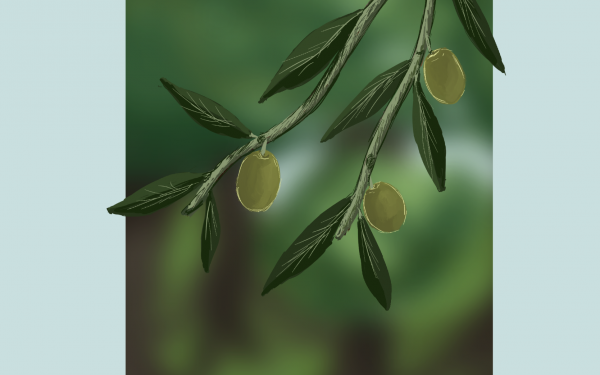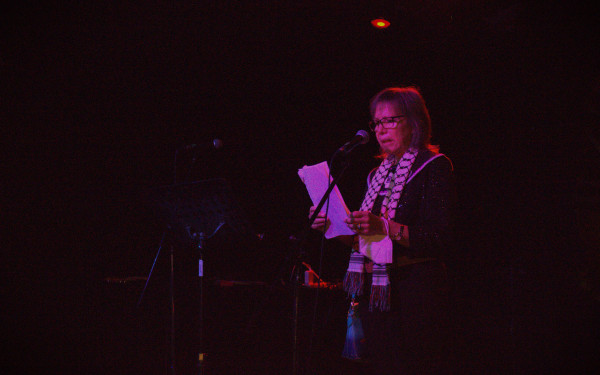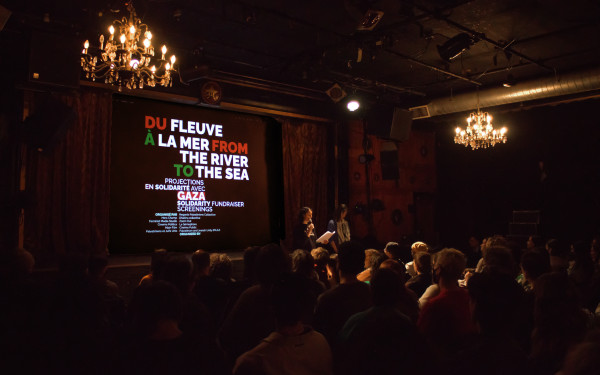The Art of Tatreez: Weaving the fabric of the people
VAV Gallery moderates Tatreez Workshop with Palestinian guest Amnna Attia
On Jan. 15, a Tatreez facility workshop was conducted in the VAV Gallery in the Visual Arts building of Concordia. This event was moderated by Fine Arts Student Alliance (FASA), and taught by guest artist Amnna Attia, an urban studies student at McGill University who does Tatreez facilitation and art curation on the side.
In a bustling scene with Palestinian food kiosks and scattered sewing materials amidst boycott slogan flyers, Attia led an introductory session to this very hands-on craft. There, she shared the cultural heritage of Gaza—a journey encompassing the city’s rich history, symbols, and resilience across 3,000 years—enhancing the art of Tatreez as very much not a dying tradition. Beyond a mere crafting session, this workshop served as a platform for interaction, creativity and solidarity, honoring the unyielding spirit of Gaza's people.
Attia discovered Tatreez embroidery in tenth grade during a heritage project, connecting her to her Palestinian culture. Her interest grew after attending a workshop with her brother just before the pandemic, where she learned its history from a friend. Before this, she was unaware of Tatreez's history, originally a hobby on women's dresses but later evolving into a symbol of resistance during the Nakba.
“It became a tool for providing for our families' needs,” she explained. “They were being exiled into either Gaza or the West Bank, or they were exiled into the surrounding countries … and they needed to reconnect with the heritage that they were exiled from and, also survive. For the women in the camps specifically, their husbands would be out working or providing, resisting, and fighting. And women were in camps with their children. Poverty was growing and they needed to make money. And so they would resort to something that they're very familiar with, they would resort to Tatreez.”
Attia went on to explain that before the Nakba, Tatreez was influenced by regional identities, with motifs varying across different areas. However, after the Nakba, when Palestinian women were exiled into camps, the focus shifted to producing Tatreez quickly and efficiently, leading to a loss of regional identity. Women from various regions shared motifs, using whatever materials they could afford. This shift influences Attia's understanding of her art, prompting her to explore her own regional identity from Yebna, an administrative area near Yaffa.
As she emphasizes the cultural significance of Tatreez in Palestinian communities, especially in the diaspora, she recalls what prompted her to teach. Finding comfort in embroidering during the pandemic, she transitioned from traditional to contemporary motifs, noting a disconnect among Palestinians in the diaspora. To address this, she organized her first workshop in Mississauga, aiming to revive intergenerational storytelling. The workshop's success spurred her to continue teaching Tatreez basics, meeting the demand for heritage reconnection.
This event was brought to life thanks to a contact she had in the CSU, who connected her with the VAV Gallery and FASA. Attia received numerous requests for platforms to learn about Palestine after Oct. 7. Her first workshop in Montreal, following previous ones in Toronto, created a sense of community and provided a space for learning and resistance through Tatreez embroidery.
Flora Nwakobi, the programming coordinator at the VAV gallery, explained that they welcomed with open arms the Tatreez workshop idea, as they base a lot of their curation and programming around solidarity with indigenous peoples and anti-colonialist ideologies, being very vocal with their support of disenfranchised people.
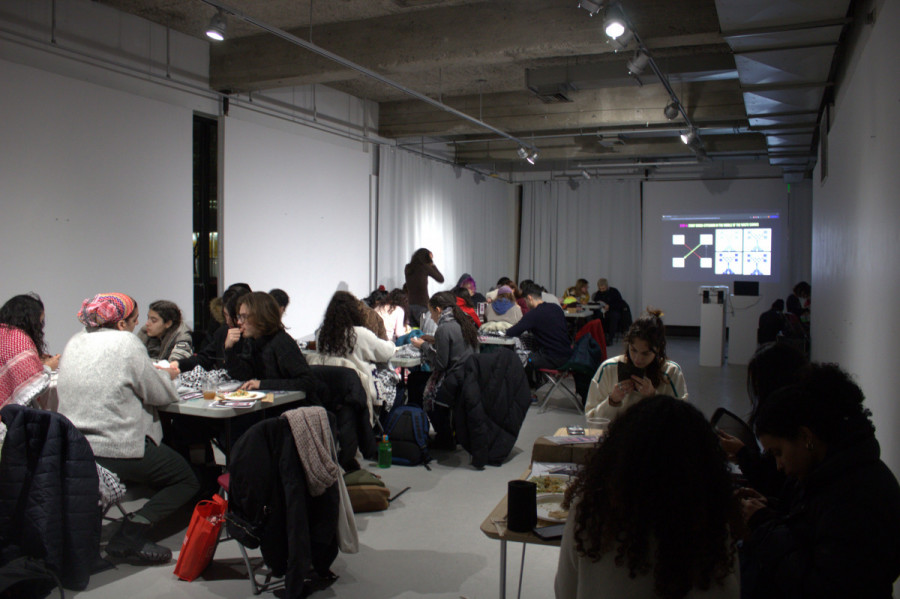
“Trying to convince our government itself to do something can be very tiring, and it can cause a lot of fatigue,” they emphasized. “Creating art as a way of resistance and working through those emotions in a way can be very healing. That can foster this community of people who are like-minded and who want to, release all of the pain and all of the grief that a lot of us may be feeling through the act of embroidering and creation.”
Preferring to stay anonymous, two of the workshop attendees expressed their motivation for attending the workshop, citing a desire to support initiatives related to Palestine and to learn more about its culture and history through Tatreez embroidery.
“I think we're furthering a tradition,” says one of them. “We're helping to keep the tradition alive andto support Palestinian voices on campus. I think that university kind of tries to silence things like this. As students, we need to show up for these things, to show up to support. This happens despite the university attempting to censor Palestine.”
Oral storytelling, passed down through generations, finds expression in the intricate stitches adorning traditional dresses, serving as a tangible link to Palestinian heritage. Through Tatreez, conversation becomes woven into the fabric itself, fostering dialogue and connection among communities. Indeed, the fabric serves as more than a mere material; it acts as a catalyst for cultural exchange and understanding, embodying the enduring spirit of resilience and solidarity.
“Teaching Tatreez is a way for me to learn about Palestine,” utters Attia. “Because there's only so much that I can learn from my own family history. It's through these small conversations that I learned more about the different cities or different villages and the different traditions. It's like an intimate moment with another Palestinian that for me, I don't know how I would get any other way. It's not every day that you meet a Palestinian.”
Attia suggests utilizing various online resources to learn about Palestine directly from the Palestinians themselves. She recommends following artists and journalists who share their experiences and stories on platforms like Instagram. Additionally, she highlights specific websites like Tirazain.com, which offers a vast index of traditional motifs found on Palestinian dresses and historic paintings, and Tatreeztraditions.com, which provides step-by-step guides on Tatreez embroidery techniques. These resources aim to facilitate easy learning and understanding of Palestinian culture and heritage.
“Tatreez is not a dying tradition,” voices Attia. “People think that it's dying, it's going away, but it's truly not. The people that come to these events like mine are so passionate and so eager to learn. And that's what makes it alive: this idea that Tatreez is alive because of the people who attend these workshops and they embroider and they take it home and then they show it to someone or they wear it, and someone asks ‘what is that?’ and they say it’s Palestine.”

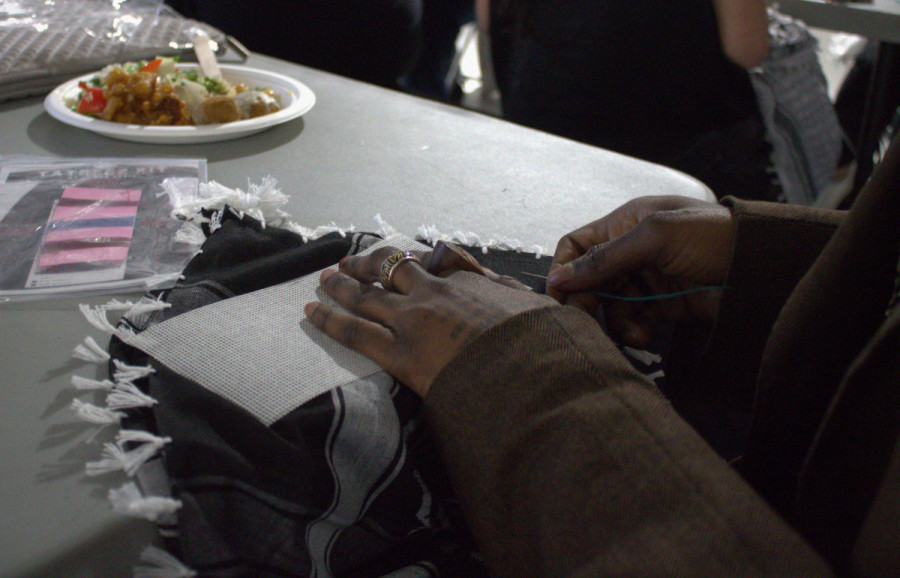
_600_832_s.png)

